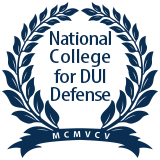DRIVING WHILE INTOXICATED over 0.08% "Per Se DWI," VTL 1192.2
In New York, DWI over 0.08 is only charged when the driver has supplied the police with a sample of their breath or blood. This means that the driver was arrested for suspicion of DWI or DWAI drugs (VTL 1192.4) and submitted to a chemical test. The legal limit for blood alcohol concentration (“BAC”) is 0.08% in New York. Therefore, if you are at or over 0.08%, then you can be charged with this crime. New York law specifically states:
““Under our law, no person shall operate a motor vehicle while such person has .08 of one per centrum or more by weight of alcohol in the person’s blood as shown by chemical analysis of such person’s blood, breath, urine or saliva.” ”
How does the government prove this charge?
They use the breath or blood test result to prove that you were legally intoxicated over 0.08% BAC. In other words, this charged is based solely on the opinion of a machine. The government will have to prove that the chemical test was administered correctly, that the machine was working properly, and that proper protocols were followed for this test to be deemed accurate and reliable.
What are the penalties of DWI over 0.08% or “DWI Per Se”, VTL 1192.2?
- Up to 1 year in county jail
- Up to 3 years of probation (closely-monitored community supervision)
- Mandatory Ignition Interlock Device for 1 year
- $500-$1000 fine
- $395 or $400 court surcharge (depends on if City or Town/Village court)
- Participation in Drunk Driver Program (DDP) class [7 week class]
- Revocation of license for 6 months [1 year if under age 21]
- Mandatory attendance to Victim Impact Panel
- DMV fines of $750 over 3 years (Driver Responsibility Assessment)
- Fees for DMV relicensurc
- Community Service Hours
- Permanent Criminal Record (there is no expungement in New York)
HOW DO WE FIGHT THIS CHARGE FOR YOU?
When it comes to a breath or blood case, the best way to defend you is to challenge the technology and the science behind the technology. In Ithaca and most of the Finger Lakes Region of upstate New York, the local police use the DATAMASTER DMT for chemical breath tests. The New York State Police use the Draeger 9510 in this area for chemical breath tests.
Both breath machines have limitations. In general, we would defend you several different ways. We would try to prove that:
- The breath test was NOT administered properly;
- The machine was NOT working properly;
- The test result is unreliable.
The only way to do that is if you understand the SCIENCE of the test itself and the PROTOCOLS of how these breath tests are supposed to be administered by the police officer.
How do these machines work?
These breath test machines use “infrared absorption spectrometry” to measure blood-alcohol concentration in the blood.
What is that? Basically, the police have you blow your breath into a tube and it passes through a sample chamber. Then, an INFRARED LIGHT is shown through the sample chamber. If there is any alcohol on your breath, the infrared beam will be blocked by ethyl alcohol molecules and acetone molecules. Then, the machine reads how much light passed through the chamber and generates a BAC percentage. (i.e. 0.08% BAC) If there is alcohol present in your breath, it will block some of the light…
More scientifically, Infrared spectroscopy measures the METHYL group energy of ethanol (the chemical molecule that makes up alcohol).
What are the machine’s limitations?
There are many…
a) The machine can give FALSE POSITIVE readings if the Infrared Light is blocked by other non-alcohol molecules in your breath. Examples include odors from Ketones [isopropanol] (from Atkins type diets, vomit in your mouth, etc), diabetes (acetones) stomach contents from your breath, dentures, recent dental work, esophageal reflux, pharyngeal reflux, and more. Anything in your mouth can skew the test and make it unreliable. Your own body chemistry can also skew the result.
*In other words, the machine cannot differentiate between ethyl alcohol molecules and other molecules of the same micron size as the infrared beam. If the light is blocked, the machine assumes it is because of ethyl alcohol molecules. At any given time, there are as many as 200 different compounds on human breath, the problem with this machine, is that 70-80% contain METHYL. [29(1) Clinical Chemistry 5 (1983)] This can drastically skew the results of a breath test. IR machines have problems distinguishing methyl from ethyl alcohol. 42 (6) Journal of Forensic Sciences 1080 (1997).
The machine CANNOT detect “mouth alcohol.” If you take a shot (1 oz. alcohol) and then take a chemical breath test, even if you are sober, the machine will likely measure a much higher BAC than what is actually in your blood. This is because directly after a shot —the alcohol molecules linger on your breath—but the effects of the alcohol have not been absorbed into your blood stream. This is a false positive.
The machine is usually only given to a person ONCE. A single sample is not enough scientifically to determine if the result is accurate. It cannot measure the stability of the concentration. Often, the police will have you take the test until they get the result they want. Or they will ask you to “blow longer” because they know that the longer and harder you blow—the higher the result will probably be. The machine measures without regard to volume or quality of the breath sample. “Breadth of Breath Testing.” (Coffey, Mimi) 2015.
b) The machine assumes that all people are the same! The government is using a sample of your breath to prove the content of your blood. Does that seem fair? The machine uses a “blood to breath conversion ratio” of 2100:1 milliliters. In words easier to understand, the machine relies on the premise that in EVERYONE the amount of alcohol in 2100 milliliters of breath equals the alcohol in 1 milliliter of blood.
The problem is —Every Person is Unique. The ratio doesn’t take into account the following: gender, age, weight, medical history, and unique body chemistry. In fact, members of the scientific community have said that the ratio varies in each person from 1100:1 all the way up to 3400:1. That’s a huge range. But the machine only assumes 1 range for all people tested. It cannot adapt. Therefore, results may be skewed in many DWI cases.
c) Even with the problems mentioned in a) and b) above —the test is still deemed admissible in NY. However, a defense attorney can argue the WEIGHT of the evidence (in other words, how important it is to a jury). It would be difficult to have evidence of the breath test suppressed unless we can prove the machine was NOT functioning properly at the time of the test (or was not calibrated properly).
d) The Breath Test Operator (the police officer) has to follow all the right PROTOCOLS in giving the test. If any of the protocols aren’t followed, then the test can be unreliable. The officer must observe the subject for a minimum of 15 minutes prior to the test, check the subject’s mouth for any contaminants or obstructions, and do proper checks of the machine itself (run a blank sample and a reference sample as well as make sure the machine is working properly). If the BTO fails to do any of these required tasks, then it may be possible to seek to suppress the evidence of the test itself due to its unreliability.
Remember: It is the Government’s burden to prove you were legally intoxicated beyond a reasonable doubt. It is our job to protect you by showing that DOUBT EXISTS to a Judge or a Jury. The science behind how the machine works and the necessary protocols of the Breath Test Operator can become our ally in a DWI breath test case.
If you are charged with DWI over 0.08 or Aggravated DWI, call us: (607) 229-5184
Request a Free Consultation
Fill out the following form and one of our experienced attorneys will contact you in the next 24 hours to provide you with a free consultation.
“Mr. Cyr made it possible for me to be able to continue on with my future without a criminal charge.”



